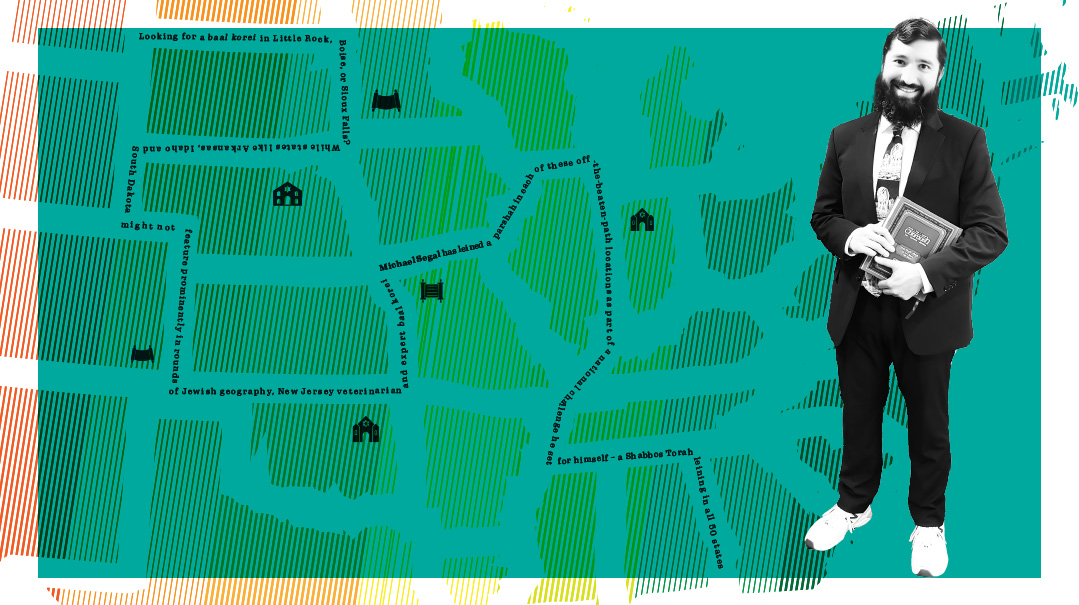Torah Quest USA
| September 5, 2023New Jersey veterinarian and expert baal korei Michael Segal's quest to lein the weekly parshah in all 50 states

Photos: Personal archives
Like so many other 12 year olds, Michael Segal of Hollywood, Florida, prepped extensively for his 1997 bar mitzvah under the tutelage of the local Young Israel’s Rabbi Edward Davis. He diligently reviewed the leining of his parshah, Metzora, even doing a practice run in a German castle while accompanying his grandparents on a visit to a friend.
But while most bar mitzvah boys are grateful to make a baruch shepetarani of their own after a single reading of their parshah, Segal had other plans. Just weeks after his official debut at the bimah, he leined the first two aliyos of parshas Pinchas while visiting his grandparents in New Jersey, giving them the opportunity to share their nachas with their friends who hadn’t been able to make it down to Florida for his bar mitzvah. And the rest, as they say, is history.
Segal continued leining the occasional aliyah at the Young Israel’s teen minyan. After finishing ninth grade at Katz Yeshiva High School in Boca Raton (known at the time simply as Yeshiva High School), he started taking on full parshiyos, a commitment he kept to when his family relocated to Paramus, New Jersey.
Acquiring new techniques that allowed him to master a parshah more effectively was a game changer for Segal, who was soon leining a full parshah every five to seven weeks. By the time he went to Israel’s Yeshivat Har Etzion as a gap-year student, he was proficient enough to pass the test to serve as a baal korei at the yeshivah’s main minyan.
Week after week, Segal’s passion for the parshiyos grew, and by the time he was finishing veterinary school at age 27, he decided to up the ante and lein every sedrah in full, on Shabbos, before his 30th birthday. He achieved his goal by leining parshas Ki Sisa in February 2014, two months ahead of his milestone birthday. With that under his belt, Segal was ready to tackle his next long-term project.
Oops! We could not locate your form.







